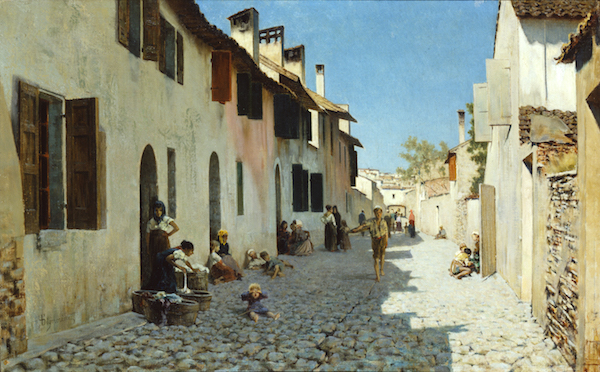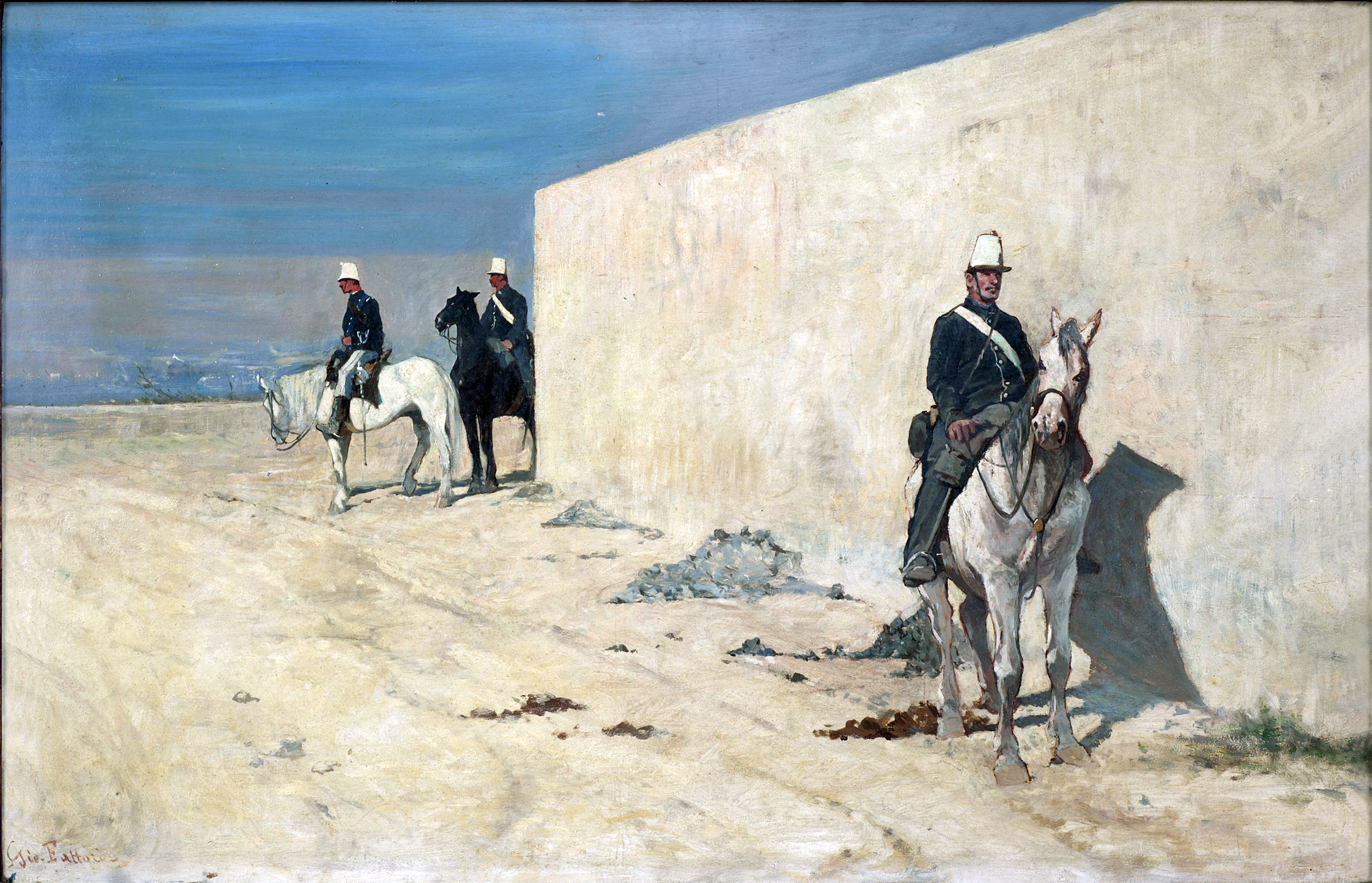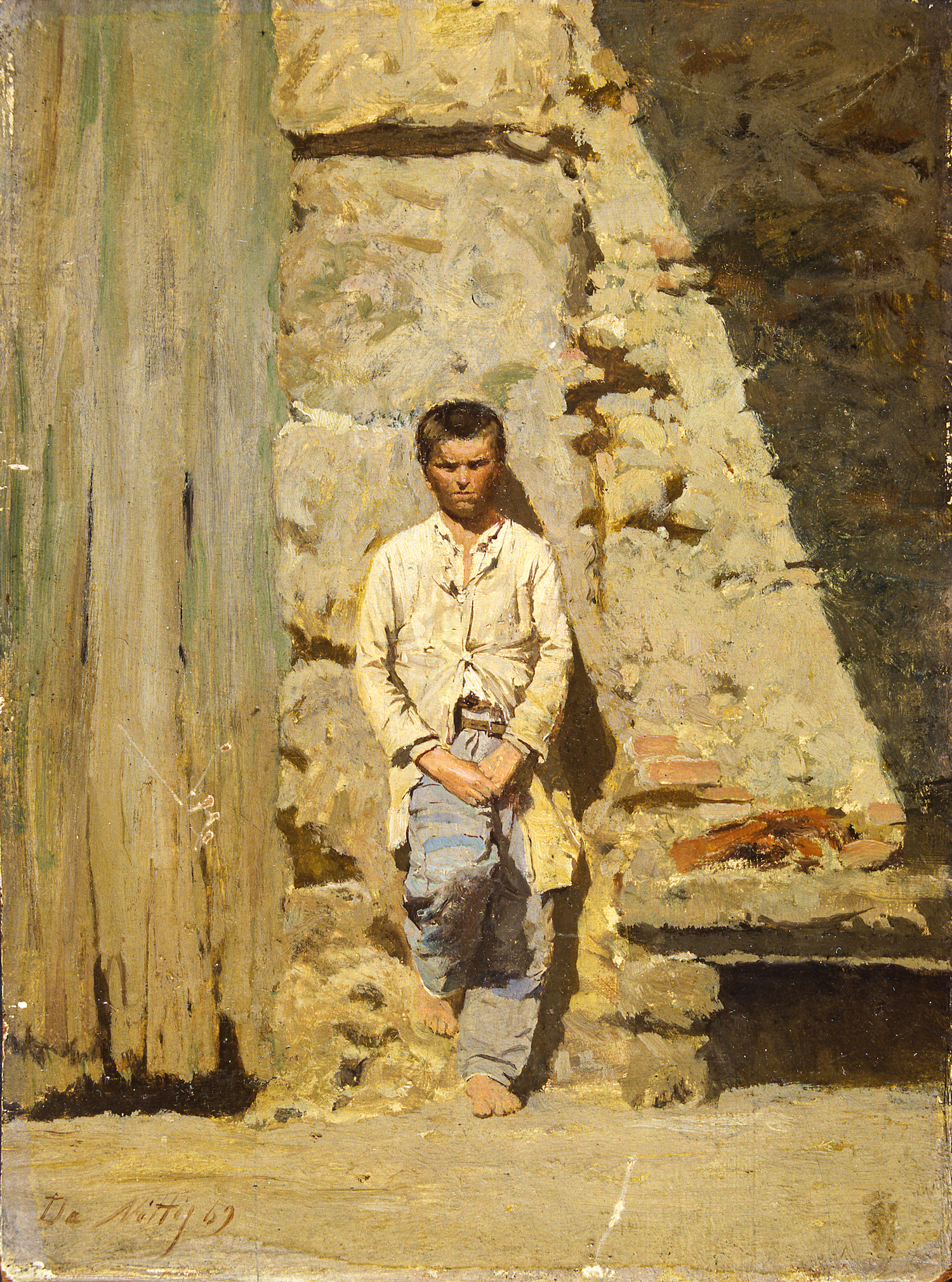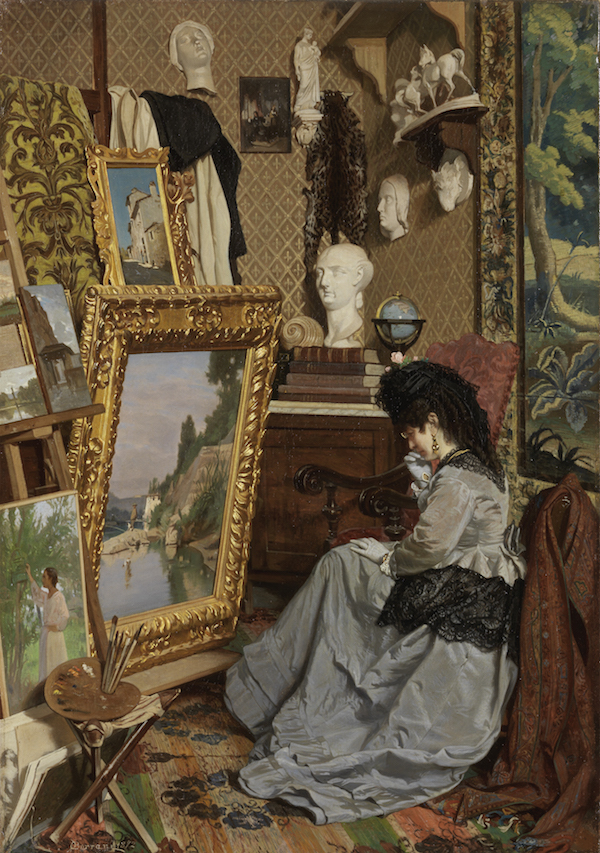Cristiano Banti, Portrait of Alaide sitting in the garden, Around 1875, Ancient Banti Collection | Courtesy of Dart – Chiostro del Bramante and Arthemisia Group 2016
The expressive power of light, the energy of color, the anti-academic charm of the most innovative movement of the Italian nineteenth century: we are talking about the painting of the Macchiaioli, who next autumn will become protagonists of the national exhibition scene with two major exhibitions.

Telemaco Signorini, Una via di Ravenna, 1876. Oil on canvas, 47×75 cm I Courtesy Arthemisia
The first will lead to Pisa 130 works from great museums such as the Uffizi Galleries, the National Gallery of Modern Art in Rome, the Museum of Science and Technology in Milan, the Gallery of Modern Art in Genoa, as well as numerous paintings preserved in private collections, often inaccessible to the public, which they will find in Blue Palace a spectacular stage. From 8 October 2022 to 26 February 2023 the exhibition curated by Francesca Dini for MondoMostre it will tell in 11 sections the adventure of a singular avant-garde, whose research anticipated the revolutionary conquests of the Impressionists. The Macchiaioli movement, explain the creators of the project, has become popular “over 50 years ago thanks to the now historic exhibition of Forte Belvedere in Florence: much has been said and represented about their art, without ever being able to fully restore that visibility international that belongs to them, above all because of the competition with French Impressionism ”.

Giovanni Fattori, Piantoni. The white wall (On the lookout), c. 1874, Oil on canvas, cm. 37×56, Fondazione Progetto Marzotto
The second exhibition, staged from November 19 to April 10, will have the Revoltella Museum from Trieste. The itinerary designed by the curator Tiziano Panconi it looks like a long journey through landscapes, portraits, historical episodes, scenes of everyday life in a close encounter with the legendary painters of the “scrub”. In comparison the main interpreters of the movement, from Giovanni Fattori to Telemaco Signorini, from Silvestro Lega to Giovanni Boldini, passing through Giuseppe De Nittis, Odoardo Borrani, Cristiano Banti, represented in many cases by absolute masterpieces: paintings once gathered in the galleries of patrons and enlightened collectors, who supported the research of artists by marrying their reasons and often becoming their friends.

Giuseppe De Nittis, Child in the sun, 1869. Oil on wood, 19×16 cm. Private collection I Courtesy Butterfly Institute Fine Art, Art Gallery, Lugano
Six sections will reconstruct the history of the movement, focusing on the themes most dear to the nineteenth-century masters: the poetry of nature, the intimacy of domestic life, the story of the Risorgimento, urban life, attention to social issues. Among the approximately 80 paintings on display we will find icons such as Sunset in Maremma of Factors, Child in the sun by De Nittis, Adelaide Banti on the bench by Banti, Mom with baby of Lega, Ladies at the piano by Boldini, but also gems rarely exhibited to the public on loan from prestigious European private collections.

Odoardo Borrani, A visit to my studio, 1872. Oil on canvas, 64.5×45 cm. Private collection I Courtesy Farsettiarte, Prato

